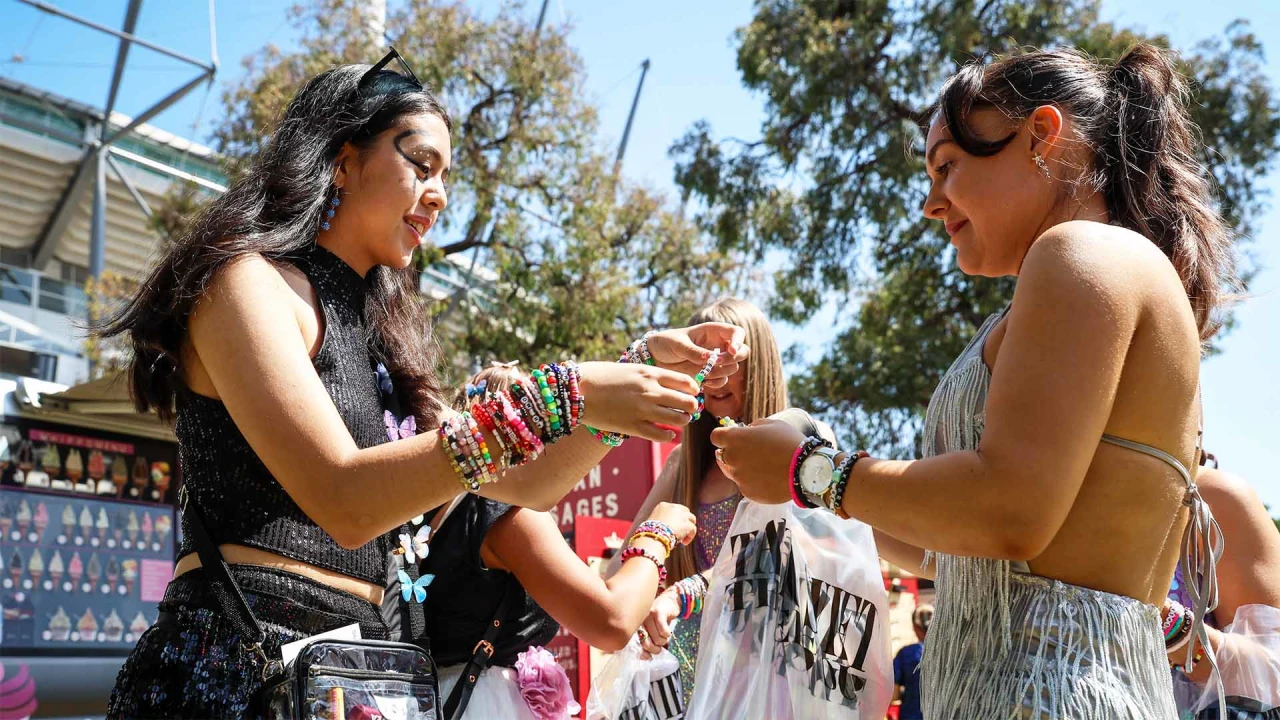BY JESSICA STILLMAN for Inc.
How did Taylor Swift manage to pull in more than $1 billion from her recent Eras Tour? A trunkload of Grammys, a kick-butt stage show, legions of adoring fans, and an attention-grabbing romance with a certain professional athlete definitely didn’t hurt.
But as an everyday entrepreneur or marketing professional, you are unlikely to have any of those things to work with. So are there any other key ingredients of Swift’s success that those without prodigious songwriting gifts — and the ability to carry off rhinestone-studded boots — can steal for themselves?
According to one University of Tasmania marketing professor, the answer is yes.
On connection and community
On the Conversation recently, Australian marketing professor Louise Grimmer offered a deep dive into the Taylor Swift brand, analyzing the singer’s image, calculating the value of her brand, and speculating on future risks to her empire. It’s well worth a read in full for dedicated Swifties and interested marketing pros alike.
But perhaps the most immediately useful section is when Grimmer digs into the clever tricks Taylor has used over the years to build a feeling of community and connection with her fans.
Swift “differentiates her brand from those of other artists by encouraging an organic fan community, complete with its own look and feel. Fans wear album-themed colors or costumes and trade friendship bracelets,” Grimmer writes. “The brand experience manifests through social media, surprise announcements, hidden ‘Easter eggs,’ concert tours, and even the Eras Tour film. Fans are never short of an opportunity to connect with the star.”
You expect a pop star to go on tour and sell merch, but Swift also finds more creative ways to make her audience feel like they’re all on one big adventure together.
“In the lead-up to the release of her album 1989, she spent time scouring the internet and selecting 89 fans who were invited to her home for exclusive listening sessions — now referred to as the 1989 Secret Sessions,” Grimmer offers as an example.
The overall effect of all these “insider only” rituals and sly references to the behind-the-scenes reality of her very public life add up to something akin to the intimate, bonding atmosphere of a sleepover party — albeit where millions of fans attend. “Taylor treats fans as friends with whom she shares secrets,” Grimmer concludes.
A lesson for other brands
If you sell lawnmowers or coffee or HR software, it’s unlikely that this exact atmosphere is a good match for your product and customer base. But that doesn’t mean tmany businesses couldn’t benefit from borrowing from Swift’s obsession with providing a steady stream of opportunities for customers to feel like in-the-know insiders.
Exclusive events, hidden features for power users, surprise announcements released to the most dedicated first, forums and communities where customers can discuss your products among themselves, inside jokes and references in your communications, or even limited edition merch that captures your ethos are all tactics that are adaptable beyond the world of music.
The overall lesson here isn’t something specific like tradable friendship bracelets or bread crumb trails of decodable hints about your latest celebrity breakup. It’s creating the broader sense that a brand and its fans are in it together. Whether you help people tidy their yards or wake up in the morning, or onboard other companies’ new employees, that feeling of community is a Swift-approved approach that nearly any brand can aim for.
